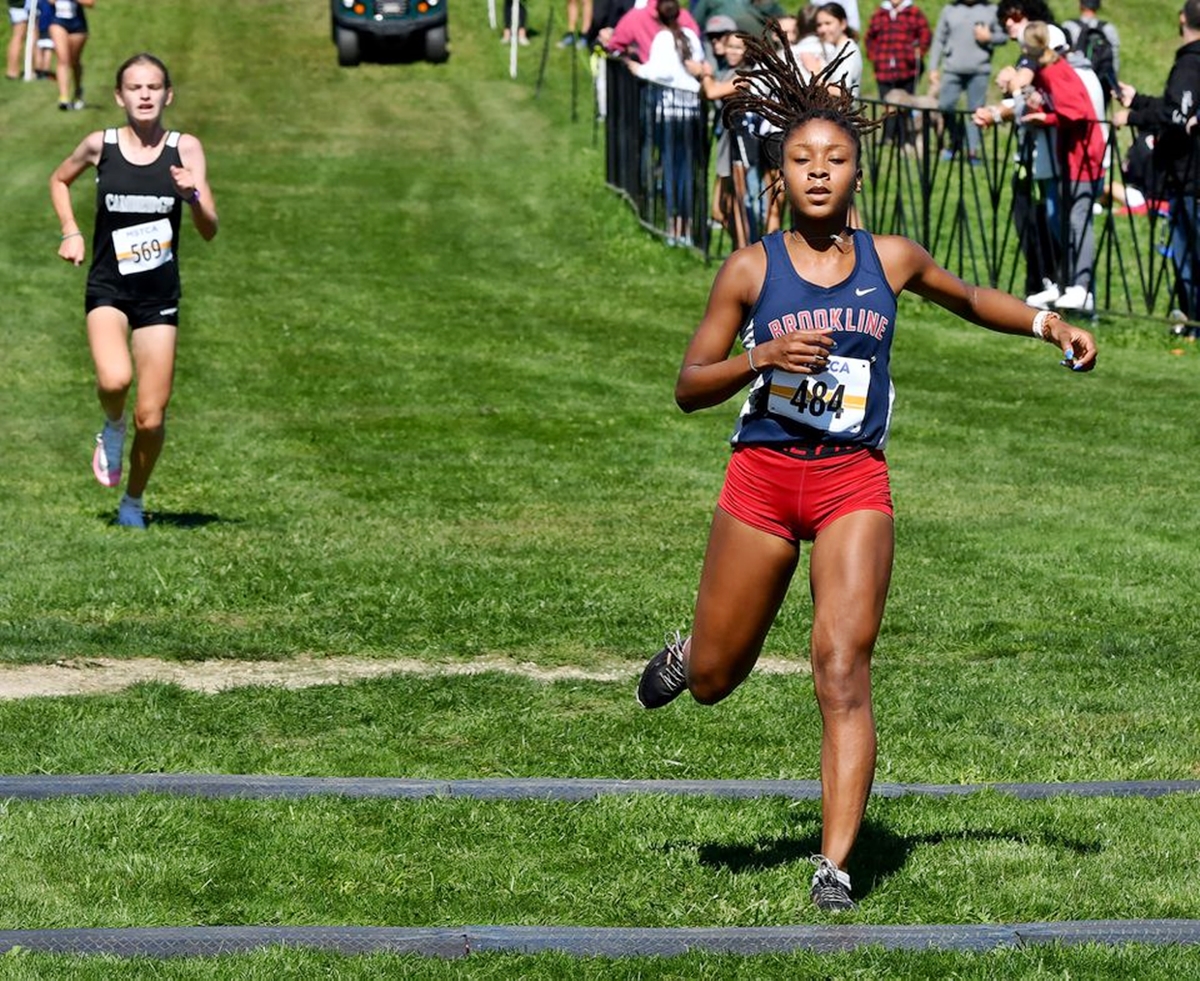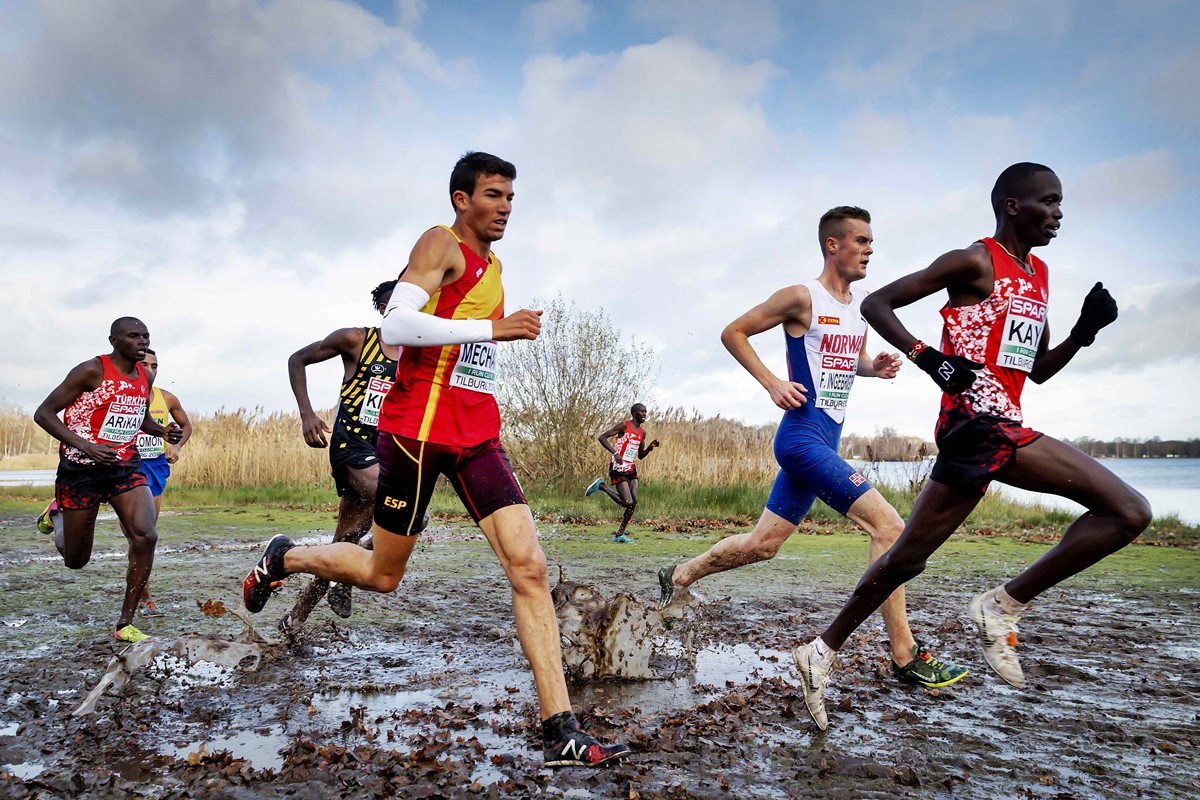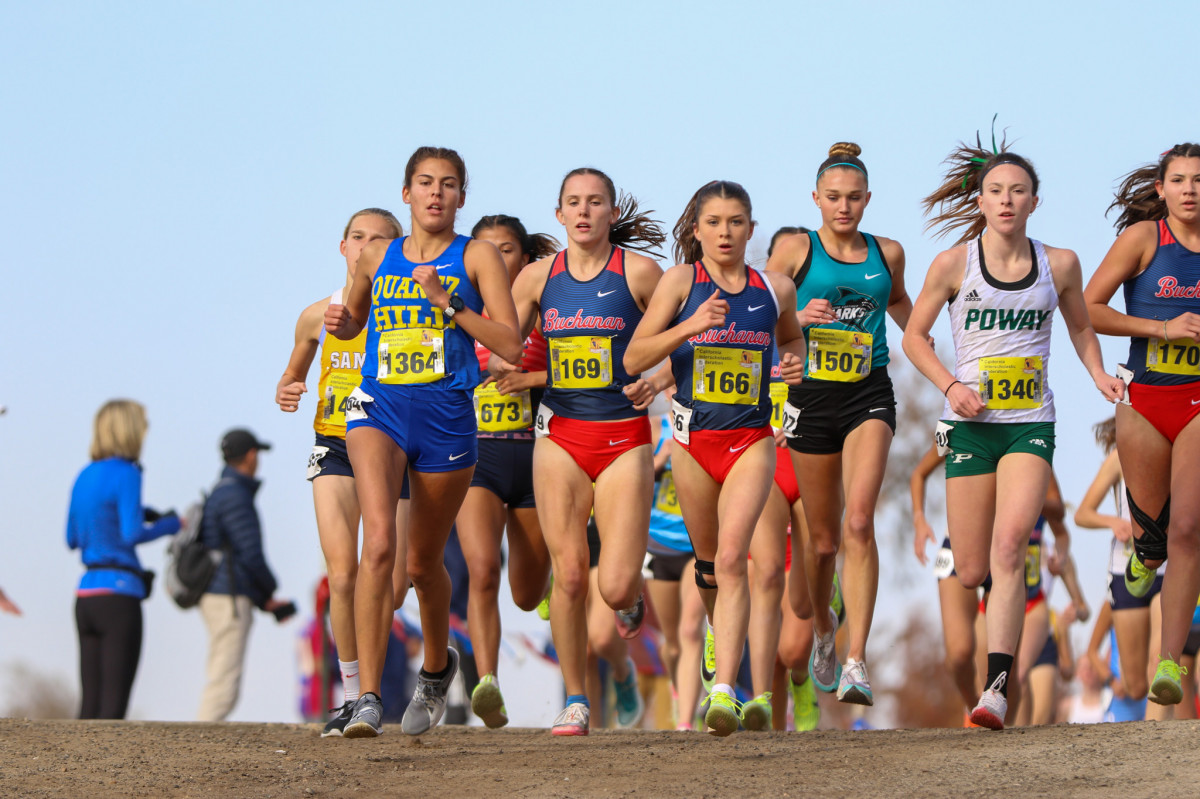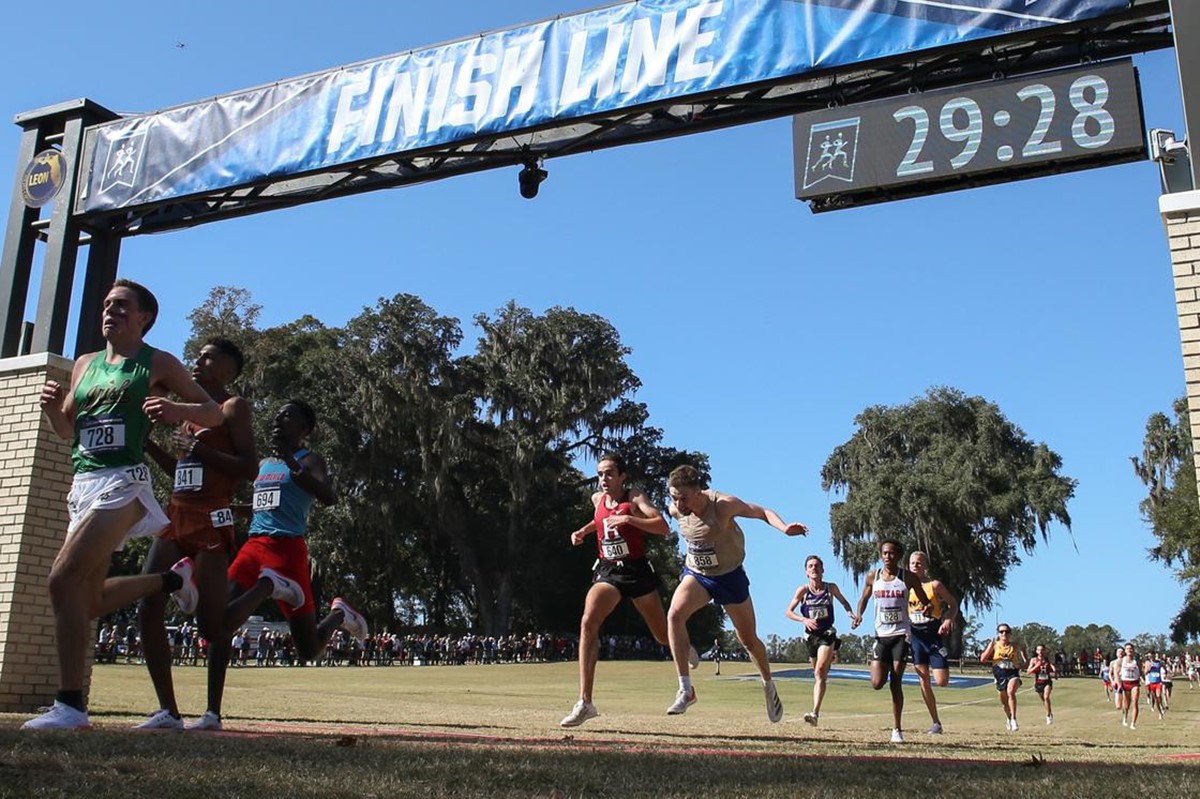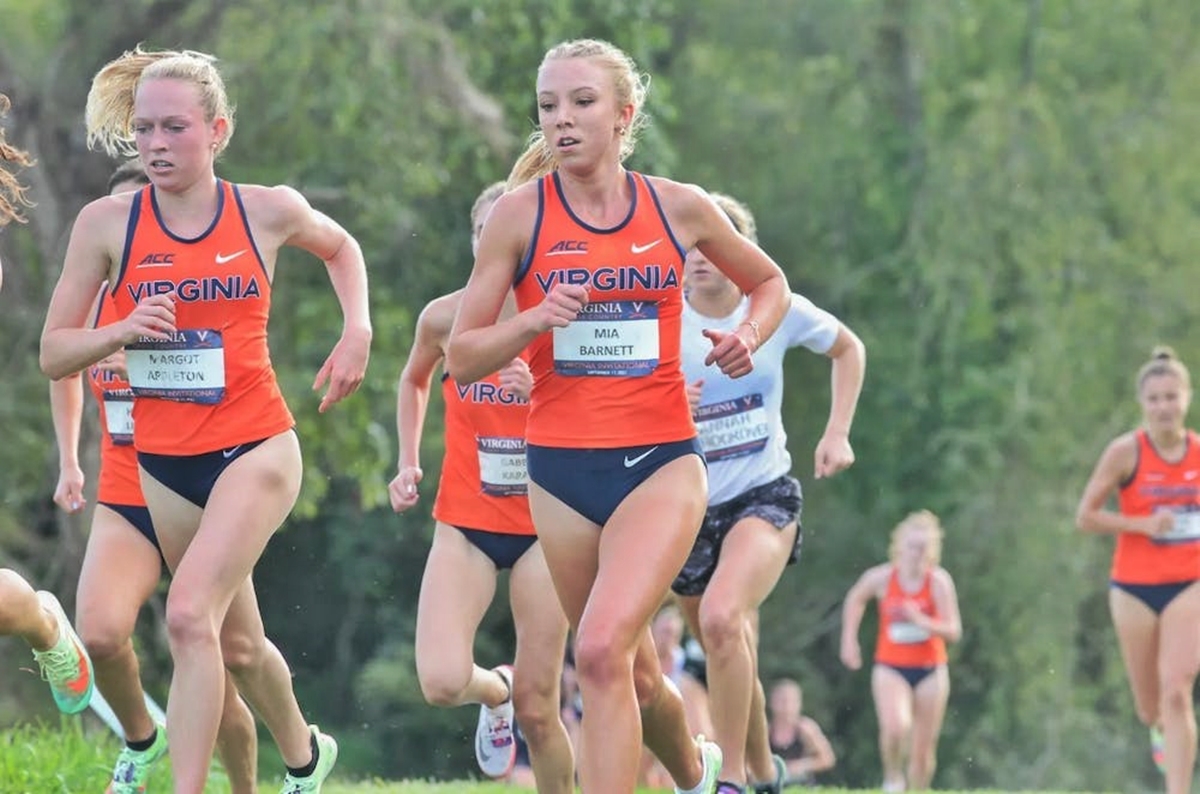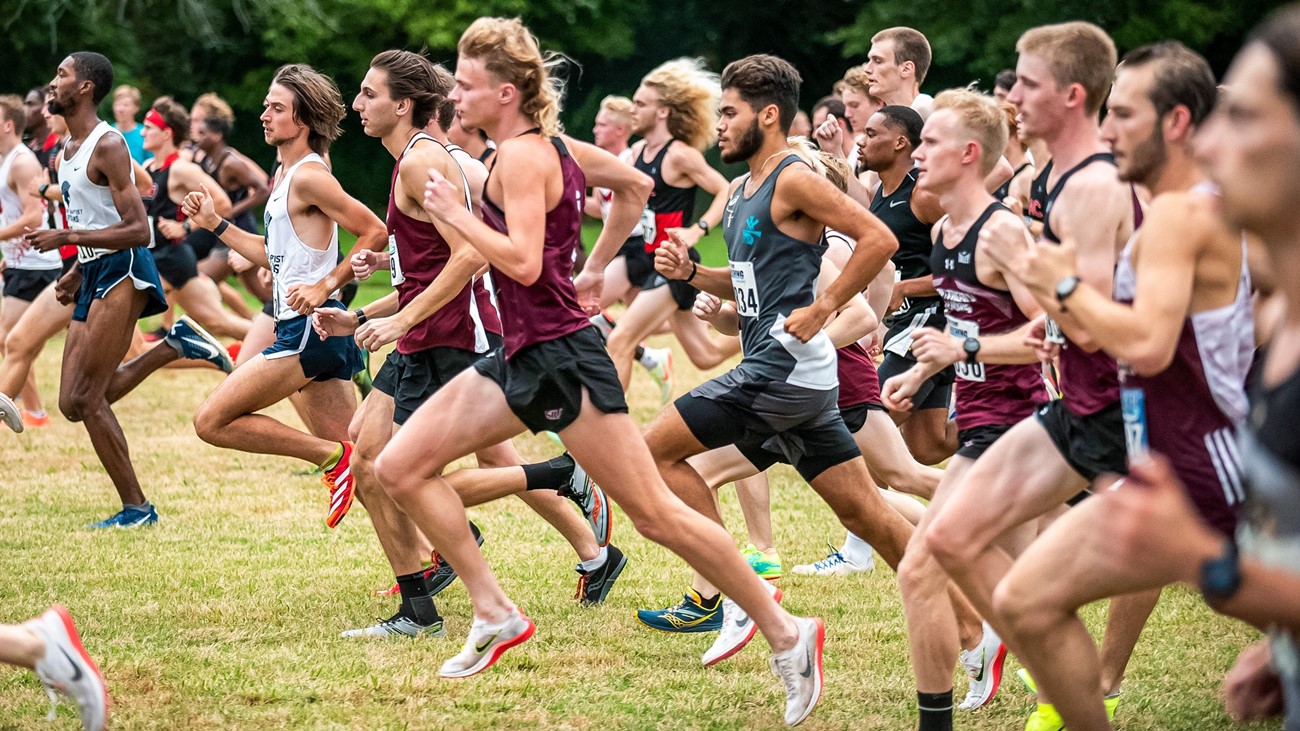

Featured
What Is The Meaning Of Cross Country
Modified: August 21, 2023
Discover the meaning of cross country running and why it is featured as a popular sport for endurance and team collaboration.
Introduction
Cross country running is a popular sport that combines endurance, strategy, and a love for the great outdoors. In this article, we will explore the meaning and significance of cross country, its origins, training techniques, benefits, and more.
Cross country running is a type of long-distance running that takes place on varied terrains, such as grass, dirt trails, and even through forests. Unlike track and field events that take place on well-defined tracks, cross country races are held on natural courses, which often include challenging obstacles like hills, streams, and uneven terrain.
What makes cross country unique is the unpredictable nature of the courses. Runners must adapt to changing conditions, making quick decisions on pacing and footwork. It is both a mental and physical challenge, requiring runners to carefully strategize their race while powering through the grueling distance.
The origins of cross country running can be traced back to the 19th century in England. It started as a means for students to stay in shape during the winter months when field sports were not possible. Schools organized cross country races on their campuses, and soon the sport gained popularity throughout the country.
Over time, the sport evolved and spread to other parts of the world. Today, cross country is a widely recognized sport, with dedicated athletes competing at all levels, from high school and college to national and international events, including the prestigious Olympics.
As a competitive sport, cross country requires a combination of physical fitness, mental stamina, and strategic planning. Runners must train rigorously to build endurance, strength, and speed. They focus on improving their cardiovascular fitness, developing strong leg muscles, and refining their running form to maximize efficiency and minimize the risk of injury.
Aside from the physical benefits, cross country running offers numerous advantages for participants. It promotes a sense of camaraderie among teammates, as athletes train together and strive towards common goals. It also instills discipline, mental toughness, and resilience, as runners must push through fatigue and overcome challenges during races.
In the following sections, we will delve deeper into the history of cross country, explore training techniques and strategies, compare it to track and field, highlight famous cross country runners, and discuss the nuances of cross country courses and races.
Definition of Cross Country
Cross country, often referred to as XC, is a form of long-distance running that takes place in natural settings and varied terrains. Unlike track and field events that are held on well-defined tracks or stadiums, cross country races are conducted on courses that can include grassy fields, trails, hills, and sometimes even forests. The unpredictable nature of the terrain makes cross country an exciting and challenging sport.
In cross country races, runners compete against each other to complete a specific distance within a set time. The distances vary according to age and level of competition, with high school races typically covering 3 to 5 kilometers (1.8 to 3.1 miles) and college or professional races ranging from 5 to 10 kilometers (3.1 to 6.2 miles).
The sport requires a unique set of skills and attributes. Endurance is a key component, as runners must be able to sustain a steady pace over extended distances. Additionally, strength, both in the legs and the core, is essential to navigate through challenging terrains and maintain efficient running form.
Strategy also plays a vital role in cross country. Runners must assess the course and plan their pace, energy exertion, and approach to various sections of the race. This might include conserving energy for uphill stretches, strategically overtaking competitors, or making quick adjustments in response to the terrain.
Furthermore, cross country is a team-oriented sport. In addition to individual rankings, teams accumulate points based on their runners’ finishing positions. The team with the lowest overall score wins the race. This team dynamic adds an extra layer of motivation and camaraderie as runners work together to achieve success.
Overall, cross country is a demanding sport that showcases a combination of stamina, strength, strategy, and teamwork. It challenges athletes physically and mentally, pushing them to their limits and fostering a sense of accomplishment and personal growth. Whether as a competitive sport or a recreational activity, cross country is an invigorating pursuit that celebrates the beauty of nature and the joy of running.
Origins and History of Cross Country
The origins of cross country running can be traced back to the 19th century in England, where it first emerged as a way for students to maintain their fitness during the winter months when outdoor field sports were not possible. It was initially known as “hare-and-hounds” or “paper chase” as runners would follow a pre-determined course marked by a “hare” who left a trail of paper for the others to follow.
The sport gained popularity throughout British schools and universities, with the first recorded cross country race taking place in 1837 at the Rugby School. The idea of organized cross country races quickly spread, and by the late 19th century, formal competitions were held both within schools and between different institutions.
Cross country’s popularity continued to grow, and the sport expanded beyond Britain’s borders. It made its way to the United States in the early 20th century, with colleges and universities adopting the sport. The first intercollegiate cross country race in the United States took place in 1883 between Harvard and Yale.
In 1913, the International Cross Country Union (now known as World Athletics) was formed, representing the official governing body for international cross country competitions. The first World Cross Country Championships were held in 1973 in Waregem, Belgium.
Over the years, cross country has evolved as an integral part of the athletic programs in many schools and universities worldwide. It has also become a popular recreational activity for individuals of all ages and fitness levels. Participants are drawn to the sport because of its emphasis on outdoor training, challenging courses, and the unique mental and physical demands.
Today, cross country is a diverse and highly competitive sport that spans across different continents and countries. It is a staple in the Olympic Games, with both men’s and women’s cross country events held every four years.
As the sport continues to evolve, cross country remains deeply rooted in its history, celebrating its origins and the spirit of trailblazers who paved the way for the sport’s growth. The combination of tradition and ongoing innovation allows cross country running to captivate runners and fans alike, providing a thrilling and enduring athletic experience.
Cross Country as a Competitive Sport
Cross country is not just a recreational activity; it is also a highly competitive sport that attracts athletes from various backgrounds. The sport offers a unique combination of physical endurance, mental toughness, and strategic planning, making it both challenging and rewarding for participants.
One of the defining aspects of cross country as a competitive sport is the emphasis on teamwork. While individual performances are recognized, the team aspect adds an extra layer of motivation and camaraderie. In team competitions, runners work together to accumulate points based on their finishing positions. This team dynamic fosters a sense of collective achievement and encourages athletes to push themselves for the greater good of the team.
Another aspect that sets cross country apart as a competitive sport is the unpredictability of the course. Unlike track and field events held on well-defined tracks, cross country races take place on natural terrain, which can include hills, trails, and various obstacles. Runners must adapt their running style and pace to the ever-changing conditions, making quick decisions on footwork and strategy. This requires mental resilience and the ability to think on their feet.
Participating in cross country as a competitive sport requires focused training and conditioning. Athletes typically undergo rigorous workouts that include long-distance runs, interval training, and strength exercises. Endurance is a vital attribute for success in cross country, as races often cover distances ranging from 3 to 10 kilometers (1.8 to 6.2 miles). Developing strong cardiovascular fitness and muscular endurance is crucial.
Additionally, cross country athletes must possess excellent running form and technique. Efficient stride length, proper foot strike, and body positioning contribute to running economy and help prevent injuries. Coaches and trainers work closely with runners to refine their running mechanics and optimize their performance.
The competitive nature of cross country extends beyond local and school-level races. Many countries hold national championships, while international competitions, such as the World Cross Country Championships, showcase the best athletes from around the world. The Olympics also feature cross country events that bring together elite runners from different nations.
Participating in cross country as a competitive sport offers athletes numerous benefits. It instills discipline, determination, and mental fortitude, as runners must push through physical and mental barriers during races. It also teaches valuable life skills, such as goal-setting, time management, and resilience, which can translate into success in other areas of life.
Overall, cross country is a sport that challenges individuals to push their limits, both physically and mentally. It provides a platform for athletes to showcase their abilities, compete at various levels, and represent their teams and countries. The competitive nature of cross country creates an exciting and dynamic atmosphere for both participants and spectators, making it a thrilling and captivating sport to be a part of.
Cross Country Training and Techniques
Training for cross country requires a well-rounded approach that focuses on building endurance, speed, strength, and mental resilience. The following are key training techniques and strategies that are commonly employed by cross country athletes.
Long-distance runs: Long-distance runs are a foundational component of cross country training. These runs, typically ranging from 5 to 15 miles, help build cardiovascular endurance and prepare athletes for the longer distances they will encounter in races. Regular long runs also help improve mental toughness and teach runners to sustain their pace over extended periods.
Interval training: Interval training involves alternating periods of high-intensity running with recovery periods. This type of training helps improve speed, anaerobic capacity, and overall race pace. Runners often perform intervals of various distances, such as 400m or 800m repeats, alternating between faster and slower speeds. This type of training simulates the demands of a race and teaches runners to maintain a fast pace while managing fatigue.
Hill repeats: Hills are significant challenges in cross country races, and training on inclines helps runners develop the necessary strength and power to conquer them. Hill repeats involve running up a hill at a challenging pace and then jogging or walking back down for recovery before repeating the effort. This type of training builds leg strength, increases stride power, and improves technique for uphill sections.
Tempo runs: Tempo runs are performed at a steady pace that is comfortably hard, just below the athlete’s race pace. These runs improve lactate threshold, which is the point at which the body begins to produce more lactic acid than it can clear away. By training at or near this threshold, runners can increase their ability to tolerate and clear lactic acid, improving their endurance and maintaining a faster pace for longer periods.
Strength training: Incorporating strength training exercises into cross country training programs helps develop the muscular strength and stability necessary for efficient running and injury prevention. Exercises such as squats, lunges, planks, and core work target the lower body, particularly the leg muscles, as well as the core muscles, which play a crucial role in maintaining proper running mechanics.
Mental preparation: Cross country racing requires mental toughness and focus. Runners learn to push through pain, maintain concentration, and stay positive even in challenging moments. Techniques such as visualization, positive self-talk, and goal setting can help athletes develop mental resilience, allowing them to perform at their best during races.
Recovery: Adequate rest and recovery are vital components of cross country training. This includes incorporating rest days into the training schedule, getting sufficient sleep, and prioritizing nutrition and hydration. Recovery allows the body to repair and rebuild, reducing the risk of injury and allowing for optimal performance during training and races.
Each athlete’s training program may be tailored to their individual needs and goals, taking into account factors such as fitness level, racing schedule, and personal strengths and weaknesses. Coaches and trainers play an essential role in designing and overseeing the training process, providing guidance, support, and expertise.
By implementing a well-rounded training plan that encompasses these techniques and strategies, cross country athletes can enhance their physical conditioning, improve performance, and maximize their potential.
Benefits of Cross Country Running
Cross country running offers numerous benefits for individuals of all ages and fitness levels. Beyond the physical advantages, it provides a platform for personal growth, fosters a sense of community, and promotes overall well-being. The following are some of the key benefits of cross country running.
Improved cardiovascular fitness: Cross country running is an excellent cardiovascular workout that strengthens the heart and lungs. Regular aerobic exercise, such as running, can lower the risk of heart disease, improve circulation, and increase stamina. The sustained effort required in cross country races helps build endurance and improves overall cardiovascular health.
Enhanced muscular strength and endurance: Cross country running engages various muscle groups, including the legs, glutes, core, and upper body. The repetitive motion of running strengthens these muscles, improves muscular endurance, and promotes overall body strength. Strong muscles are essential for maintaining good running form and reducing the risk of injuries.
Weight management and calorie burning: Cross country running is an effective way to manage weight and burn calories. Running is a high-energy activity that helps to increase the metabolism, burn fat, and maintain a healthy body weight. The combination of long-distance runs and interval training in cross country running can be particularly effective in calorie expenditure.
Mental well-being: Cross country running has a positive impact on mental health and well-being. Running releases endorphins, which are natural mood-boosting chemicals that can help reduce stress, anxiety, and symptoms of depression. The solitude and meditative qualities of running also provide an opportunity for self-reflection, relaxation, and mental clarity.
Goal setting and personal growth: Cross country running encourages individuals to set goals and work towards achieving them. Whether it’s improving race times, conquering challenging terrains, or surpassing personal milestones, the process of setting and striving for goals helps develop self-discipline, perseverance, and a growth mindset. Cross country running offers a platform for personal growth and self-improvement.
Social engagement and teamwork: Cross country running can be a highly social sport, fostering a sense of community and camaraderie among athletes. Training with teammates and participating in races together creates a sense of belonging and support. The team dynamic in cross country encourages collaboration, healthy competition, and a shared sense of achievement when working towards team goals.
Connection with nature: Cross country running allows individuals to appreciate and connect with nature. Whether running through lush forests, scenic trails, or picturesque landscapes, being in natural surroundings can have a calming and rejuvenating effect. The beauty of the outdoors creates a unique running experience and enhances the overall enjoyment of the sport.
Lifelong fitness habits: Cross country running lays the foundation for lifelong fitness habits. The discipline, commitment, and love for running developed through cross country can extend beyond the competitive years, promoting active and healthy lifestyles long-term. The skills and mindset cultivated in cross country can be carried into other areas of life, instilling values of dedication and perseverance.
Overall, cross country running offers a myriad of benefits for individuals who engage in it. It combines physical fitness, mental well-being, personal growth, and a sense of community. Whether running competitively or for recreational purposes, cross country provides a holistic approach to fitness and a gateway to a healthier and more fulfilling life.
Cross Country vs. Track and Field
Cross country and track and field are two distinct sports that share similarities but also have significant differences. While both involve running, they differ in terms of terrain, race distances, training approaches, and overall focus. Understanding the distinctions between cross country and track and field can help athletes decide which sport aligns better with their interests and strengths.
Terrain: One of the main differences between cross country and track and field is the terrain on which they are conducted. Cross country races take place on natural terrains such as trails, grassy fields, and even through forests. On the other hand, track and field events are held on well-defined tracks or stadiums with a rubberized or synthetic surface. The variation in terrain makes cross country more challenging and unpredictable, as runners must navigate through different terrains and obstacles.
Race distances: The race distances in cross country and track and field also differ. Cross country races typically cover longer distances, ranging from 3 to 10 kilometers (1.8 to 6.2 miles), with variations depending on the age and level of competition. In track and field, races tend to be shorter, ranging from sprints like the 100-meter dash to middle-distance events like the 800 meters or longer-distance races like the 5,000 meters. Additionally, track and field includes various field events such as long jump, javelin throw, and shot put.
Training approaches: The training approaches for cross country and track and field can also vary. Cross country training focuses on building endurance, as athletes need to sustain a steady pace over extended distances. Training includes long-distance runs, hill workouts, and interval training to improve cardiovascular fitness and muscular strength. In contrast, track and field training places a greater emphasis on speed and explosiveness. Sprinters focus on short, intense bursts of speed, while middle-distance and long-distance runners work on maintaining speed and endurance over shorter distances.
Team vs. individual emphasis: Another distinction between cross country and track and field lies in the emphasis on team versus individual performance. Cross country is often regarded as a team sport, with both individual and team rankings. Teams accumulate points based on the finishing positions of their runners, aiming for the lowest total score. In track and field, while there are team competitions, such as relay races, individual performances are often the focus. Runners aim to achieve personal records, qualifications for higher-level competitions, or national rankings.
Seasonality: Cross country and track and field also differ in terms of their seasonality. Cross country is commonly associated with the fall season, as races take place in cooler weather and during the school year. Track and field, on the other hand, is typically conducted during the spring and summer months, with athletes participating in various meets and competitions leading up to championship events.
Ultimately, the choice between cross country and track and field depends on an individual’s preferences, strengths, and goals. Cross country offers the opportunity to compete in challenging terrains, build endurance, and experience a team-oriented atmosphere. Track and field provide a diverse range of individual events, allowing athletes to focus on their specific strengths and work towards achieving personal records. Both sports offer unique and rewarding experiences, adding value to the world of athletics.
Famous Cross Country Runners
Cross country running has produced many legendary and influential athletes who have left their mark on the sport. These individuals have achieved remarkable feats, set world records, and inspired generations of runners to push their limits. The following are a few examples of famous cross country runners who have made a significant impact in the sport:
Haile Gebrselassie: Haile Gebrselassie is an Ethiopian long-distance runner who is considered one of the greatest distance runners in history. He dominated both cross country and track and field events, winning numerous gold medals and breaking multiple world records. Gebrselassie’s perseverance, determination, and exceptional performances have earned him a place among the all-time greats.
Lynn Jennings: Lynn Jennings is an American long-distance runner known for her accomplishments in cross country running. She won three consecutive World Cross Country Championships titles from 1990 to 1992, establishing herself as one of the most dominant female cross country runners of her time. Jennings’s fierce competitiveness and mental toughness made her a force to be reckoned with on the international stage.
Paula Radcliffe: Paula Radcliffe, a British distance runner, is renowned for her achievements in both road racing and cross country. She holds the women’s world record in the marathon and has won numerous cross country championships. Radcliffe’s exceptional endurance, determination, and grit have solidified her legacy as one of the greatest distance runners of all time.
Steve Prefontaine: Steve Prefontaine, an American middle-distance runner, became an icon in the sport before his untimely death at the age of 24. Prefontaine’s relentless running style, bold race tactics, and unwavering determination captured the hearts of fans worldwide. He dominated cross country races at the collegiate level and played a significant role in popularizing distance running in the United States.
Derartu Tulu: Derartu Tulu, an Ethiopian long-distance runner, achieved iconic status with her historic gold medal win at the 1992 Barcelona Olympics in the women’s 10,000 meters race. Her victory made her the first African woman to earn an Olympic gold medal in any endurance event. Tulu’s success and contribution to the sport have inspired countless female athletes around the world.
Galen Rupp: Galen Rupp is an American distance runner known for his versatility in both track and field and cross country. He has represented the United States in numerous international competitions, including the Olympics, and has set several American records. Rupp’s impressive performances and dedication to his craft have solidified his status as one of the top American distance runners of his generation.
These are just a few examples of the many famous cross country runners who have left an indelible mark on the sport. Their achievements, dedication, and passion for running have inspired countless individuals to pursue their own goals on the cross country course. These athletes serve as role models, reminding us of the extraordinary possibilities that can be achieved through hard work, perseverance, and a love for the sport.
Cross Country Courses and Races
Cross country races take place on a variety of courses, each with its own unique challenges and characteristics. From rolling hills to muddy trails, cross country courses test the endurance, agility, and strategy of runners. Here, we explore the different types of cross country courses and the races that are held on them.
Grass Courses: Grass courses are a common type of cross country course that typically consists of open fields or parks with well-manicured grass. These courses can vary in length and terrain, ranging from shorter, flatter stretches to longer, undulating sections. Grass courses often require runners to adapt their race strategy based on the texture, firmness, and condition of the grass.
Trail Courses: Trail courses take runners off-road and onto natural paths. These paths can include narrow trails through forests, wooded areas, or hilly terrains. Trail courses often provide picturesque scenery and challenging obstacles, such as tree roots, rocks, and uneven surfaces. Navigating these courses requires agility, balance, and quick decision-making.
Woodland Courses: Woodland courses are cross country courses that wind through wooded areas. Runners traverse trails surrounded by trees and foliage, often encountering more technical terrains with tight turns and occasional elevation changes. Woodland courses combine the challenges of both grass and trail courses, requiring runners to adapt to varying surfaces and navigate through confined spaces.
Muddy Courses: Muddy courses present additional challenges for cross country runners. These courses can include waterlogged fields, thick mud pits, or muddy trails. Running in mud requires not only physical strength but also mental fortitude to maintain pace and footing while dealing with the added resistance of the muddy surface.
Obstacle Courses: Some cross country races incorporate obstacle courses to further test the athletes’ skills and endurance. These courses can include hurdles, water crossings, hay bales, and other challenging obstacles that require runners to quickly adjust their stride, jump, or navigate barriers while maintaining their speed and race momentum.
Cross country races are typically organized into various categories, including local, regional, national, and international competitions. Schools, colleges, and universities often hold inter-school or intercollegiate meets, where runners compete against runners from other institutions. These races usually take place within a specified distance, with the fastest runner or team being declared the winner based on their finishing times or scores.
At the national and international levels, cross country races are held to determine champions and select representatives for prestigious events such as the World Cross Country Championships. These races attract elite athletes from around the world who showcase their skills on highly competitive and challenging courses.
Some of the most prominent cross country races include the NCAA Cross Country Championships in the United States, the English National Cross Country Championships in the UK, and the IAAF World Cross Country Championships. These races provide a platform for top athletes to demonstrate their abilities and vie for coveted titles.
Overall, cross country courses and races offer a diverse range of challenges for runners. From the fields of grass to the trails in the woods, these courses demand physical stamina, mental acuity, and the ability to adapt to different terrains and conditions. Whether navigating through mud, hurdling over obstacles, or racing against the clock, cross country courses and races provide thrilling and memorable experiences for runners at all levels.
Conclusion
Cross country running is a sport that combines physical endurance, mental fortitude, and a love for the outdoors. It has a rich history, with origins dating back to the 19th century in England. Over time, cross country has evolved into a highly competitive sport that captivates athletes and fans alike.
From its challenging courses to the strategic race tactics, cross country offers a unique and rewarding experience for runners. It demands physical fitness, mental resilience, and the ability to adapt to unpredictable terrains. The sport fosters a sense of teamwork and camaraderie, with athletes both competing individually and working together towards team goals.
Training for cross country requires a comprehensive approach that includes building endurance, developing speed, strengthening muscles, and honing mental focus. Runners undergo rigorous workouts, tackle hills, perform interval training, and engage in strength exercises to prepare for the demands of the sport. Proper rest and recovery are also essential for maintaining optimal performance and avoiding injuries.
Engaging in cross country running offers numerous benefits beyond physical fitness. It promotes mental well-being, instills discipline, and provides a sense of accomplishment. The sport encourages personal growth, develops resilience, and cultivates lifelong fitness habits.
Cross country is distinct from track and field, offering different terrains, race distances, and training approaches. The cross country courses vary from grassy fields to muddy trails, offering unique challenges and testing the abilities of runners. Cross country races are held at various levels, from local meets to national and international championships, showcasing the talents and skills of elite athletes.
Throughout the years, countless famous cross country runners have made their mark on the sport, inspiring others with their exceptional performances, dedication, and achievements. Their legacy serves as a testament to the enduring appeal and importance of cross country running in the world of athletics.
In conclusion, cross country running is an exhilarating sport that combines physical prowess, mental resilience, and a connection with the natural environment. It offers endless possibilities for individual and team achievements while promoting overall well-being and personal growth. Whether running on grass, trails, or battling muddy courses, cross country runners embrace the challenges, push their limits, and experience the joy of the journey.


